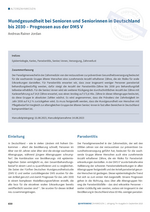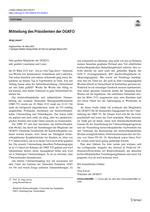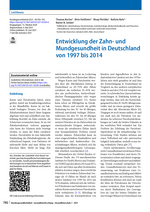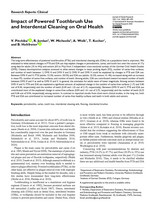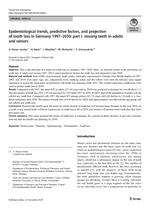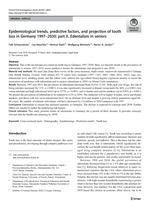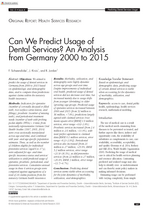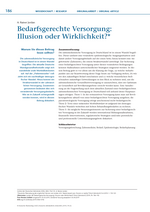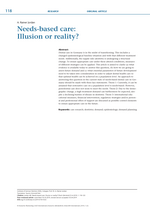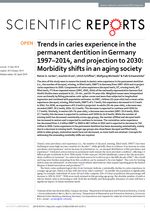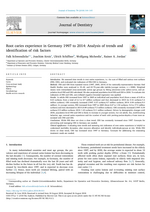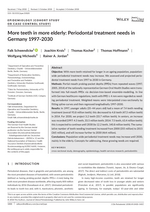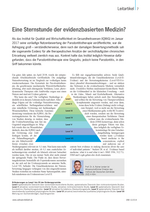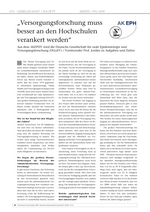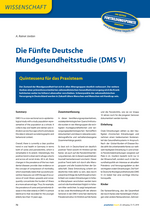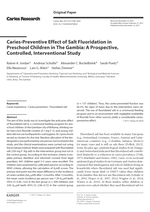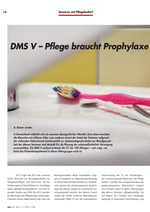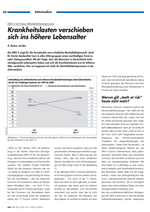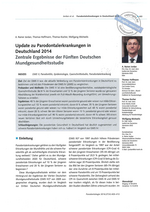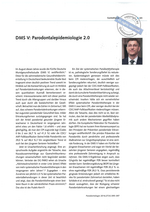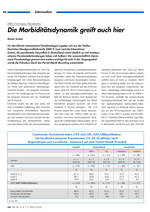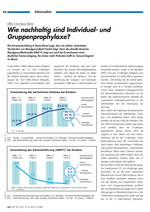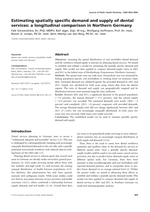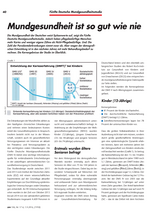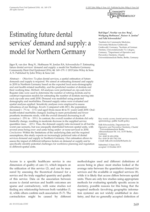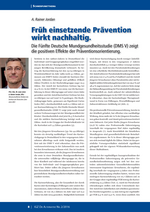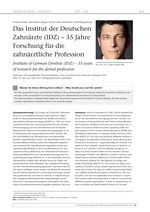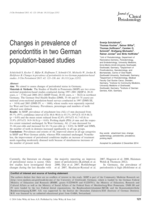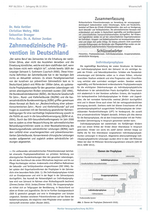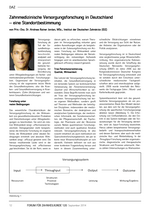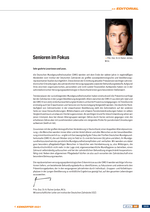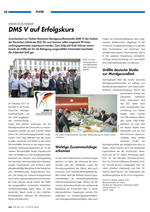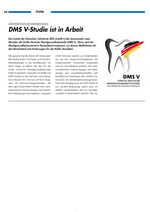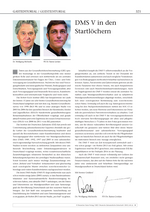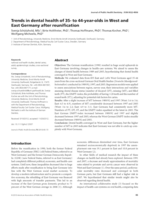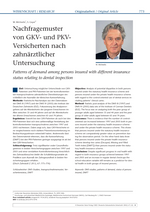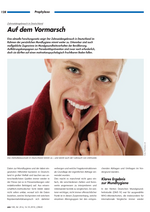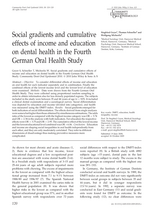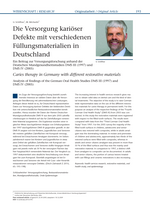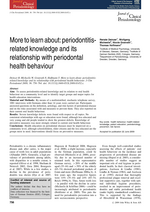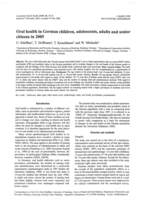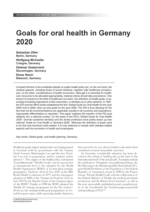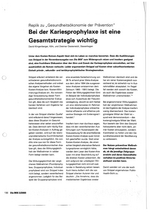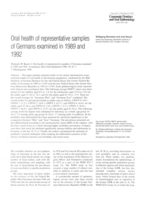
Gesundheitsversorgungsforschung und -epidemiologie
Autoren
Holtfreter, Birte
Berg, Marie H.
Kocher, Thomas
Schiffner, Ulrich
Hoffmann, Thomas
Micheelis, Wolfgang
Schlagwörter
Adults; Caries
FS-T index
German national oral health survey
Risk factors
Publikation — Zeitschriftenbeiträge
Titel
Change in FS-T index in adults in the German national oral health surveys between 1989 and 2005
Titel kurz
Community Dent Oral Epidemiol
Titel Ausgeschrieben
Community Dentistry and Oral Epidemiology
ISSN
1600-0528 (Electronic); 0301-5661 (Linking)
Jahr
2013
Ausgabe
41
Issue
3
Seitenzahl
251-260
Erscheinungsdatum
01.06.2013
Change in FS-T index in adults in the German national oral health surveys between 1989 and 2005
OBJECTIVES: To assess changes in the number of functioning teeth (filled and sound teeth, FS-T index) from 1989/1992 to 2005 in West and East Germany and to evaluate survey- and region-specific associations between sociodemographic and behavioral risk factors and the FS-T index.
METHODS: Within the German Oral Health Studies, random samples from 35-44-year-olds were drawn in 1989, 1992, 1997 and 2005. The FS-T index and a questionnaire with socioeconomic and behavioral items were assessed. Negative binomial regression models were evaluated, including all sociodemographic and behavioral factors simultaneously as independent variables.
RESULTS: For West Germany, median FS-T index increased by 3 teeth between 1989 and 2005 (Ptrend < 0.001). In East Germans, FS-T index was similar in 1992 and 1997 (median, 24), but increased by one tooth until 2005 (Ptrend < 0.001). For West and East Germany, middle and high school education were significantly associated with higher FS-T indices in all surveys, although effects were most pronounced in 2005. Being married, reporting regular dental visits and good oral hygiene were significantly related to a higher number of functioning teeth in at least one survey year.
CONCLUSIONS: Dental health assessed as the number of functioning teeth improved between 1989/92 and 2005 in both German parts and across all educational levels. However, considering the educational level, dental health was less equally distributed in 2005 compared with previous surveys.


